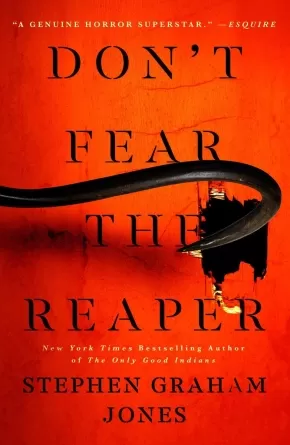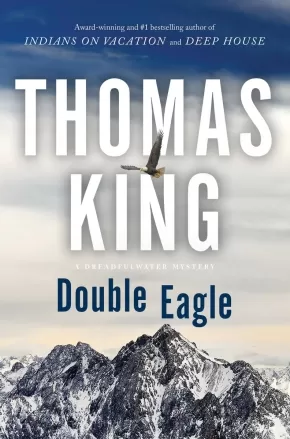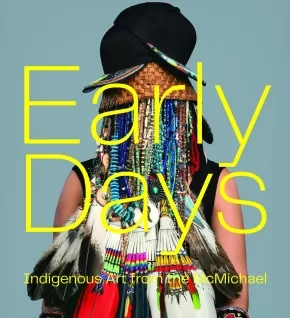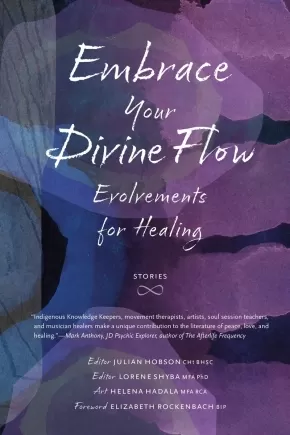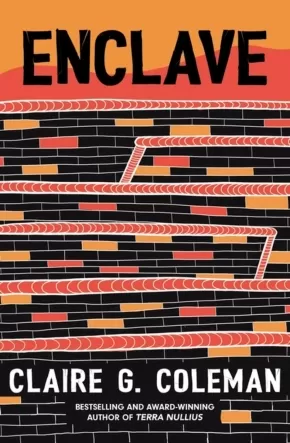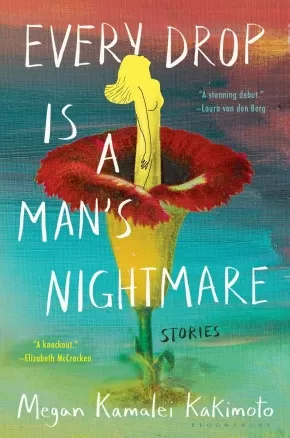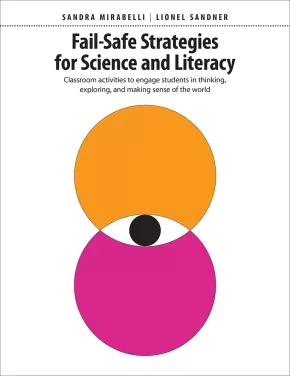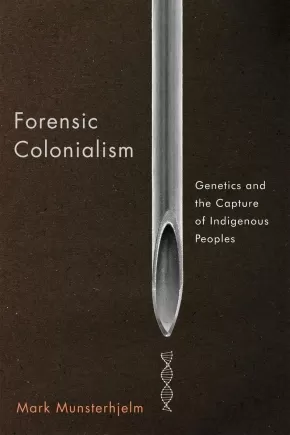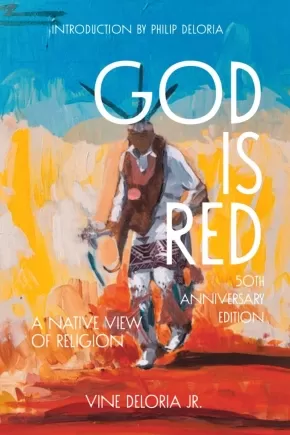Books
Synopsis:
December 12th, 2019, Jade returns to the rural lake town of Proofrock the same day as convicted Indigenous serial killer Dark Mill South escapes into town to complete his revenge killings, in this riveting sequel to My Heart Is a Chainsaw from New York Times bestselling author, Stephen Graham Jones.
Four years after her tumultuous senior year, Jade Daniels is released from prison right before Christmas when her conviction is overturned. But life beyond bars takes a dangerous turn as soon as she returns to Proofrock. Convicted Serial Killer, Dark Mill South, seeking revenge for thirty-eight Dakota men hanged in 1862, escapes from his prison transfer due to a blizzard, just outside of Proofrock, Idaho.
Dark Mill South’s Reunion Tour began on December 12th, 2019, a Thursday.
Thirty-six hours and twenty bodies later, on Friday the 13th, it would be over.
Don’t Fear the Reaper is the page-turning sequel to My Heart Is a Chainsaw from New York Times bestselling author Stephen Graham Jones.
Series Information
This is the second book in The Indian Lake Trilogy.
Additional Information
464 pages | 5.50" x 8.37" | Hardcover
Synopsis:
Buffalo Mountain is set to host a gold coin exhibition with dealers coming from all over, and Thumps DreadfulWater winds up with the task of making sure the event goes off without a hitch. As if he didn’t already have enough to do.
For starters, he and Claire Merchant are trying to work out their relationship. Should they move in together or should they continue on as they have in the past? And there’s Sheriff Duke Hockney, who wants Thumps to give up landscape photography and return to law enforcement. And last but not least, Cisco Cruz, the ninja assassin, shows up in town with a fiancée in tow.
Can things get any more complicated for our hero?
Yes, they can.
When one of the dealers at the exhibition winds up dead, Cruz’s fiancée is revealed to be an FBI agent responsible for his protection. And Claire’s adoption of Ivory hits a major snag. Like it or not, Thumps is going to have to help Claire as best he can, discover why Cruz is really back in town and try to unravel the murder of the coin dealer—before anyone else dies.
In this new DreadfulWater instalment, our favourite reluctant investigator returns with his signature wit and wry humour to solve a mystery that only Thomas King could create.
Series Information
This book is from the DreadfulWater Mystery series, a mystery/detective series from Thomas King.
Books in this series include:
- Dreadful Water
- The Red Power Murders
- Cold Skies
- A Matter of Malice
- The Obsidian Murders
- Deep House
- Double Eagle
- Black Ice
Additional Information
304 pages | 6.00" x 9.00" | Paperback
Synopsis:
In this quietly powerful and deeply human book, Ruth DyckFehderau and twenty-one James Bay Cree storytellers put a face to Canada’s Indian Residential School cultural genocide.
Through intimate personal stories of trauma, loss, recovery, and joy, they tell of experiences in the residential schools themselves, in the homes when the children were taken, and on the territory after survivors returned and worked to recover from their experiences and to live with dignity. The prose is clear and accessible, the stories remarkably individual, the detail vivid but not sensational.
Together they reveal the astonishing courage and strength of children along with the complexity and myriad methods of their oppressors. A tough, often funny, and ultimately uplifting book that’s not quite like anything else out there.
This book is published by Cree Board of Health and Social Services of James Bay and distributed by WLU Press.
Reviews
“These previously unwritten stories of lived, traumatized experiences are testament to the storytellers’ courage and strength and resilience. When the rich Cree traditional and spiritual relationship with land and with family is harmed by separation, hatred, and fear - a harm resulting in anger and loss of values, identity, and self-worth - these storytellers find ways to heal. Through their stories, you learn about culture as treatment, about the power of forgiveness and love, and about peaceful co-existence in community as essential to healing, belief, and advancing true reconciliation.” —Chief Willie Littlechild, Ermineskin Cree Nation, Former Truth and Reconciliation Commissioner, Former residential school student athlete, Order of Canada; Order of Sport, Member of Sports Halls of Fame, Canada and North America
“These Cree stories, told with utmost respect and a feeling of safety, are gifts. They are medicine.” —Joanna Campiou, Woodland/Plains Cree Knowledge Keeper
“This is a difficult but necessary book. There’s a power to truth and to the realities of the Indian Residential School system, but for those wanting to see strength and movement toward hope, this is the book for you. These stories hold that hope close to the heart. What shines through is a love of the land, a love of community, a love of the Cree language, a love of family – exactly what colonial forces like the IRS system tried to destroy but couldn’t.” —Conor Kerr, Metis/Ukrainian author, Avenue of Champions, Giller Prize longlist
Additional Information
320 pages | 7.00" x 9.00" | Paperback
Synopsis:
A landmark publication bringing together more than seventy voices illuminating the rich array of Indigenous art held by the McMichael Canadian Art Collection.
Under the editorial direction of Anishinaabe artist and scholar Bonnie Devine, Early Days gathers the insights of myriad Indigenous cultural stakeholders, informing us on everything from goose hunting techniques, to the history of Northwest Coast mask-making, to the emergence of the Woodland style of painting and printmaking, to the challenges of art making in the Arctic, to the latest developments in contemporary art by Indigenous peoples from across Turtle Island.
Splendidly illustrated, Early Days not only tells the story of a leading collection but also traces the emergence and increasing participation of many Indigenous artists in the contemporary art world. This publication will be the largest in the history of the McMichael, and represents a vital acknowledgment of the place of Indigenous art and ways of knowing in global art history.
Featured contributors: Barry Ace, Leland Bell, Dempsey Bob, Christian Chapman, Violet Chum, Hannah Claus, Dana Claxton, Jisgang Nika Collison, Alan Corbiere, Marcia Crosby, Ruth Cuthand, Mique'l Dangeli, Joe David, Sarah Davidson, Robert Davidson, Bonnie Devine, Tarralik Duffy, Norma Dunning, David Garneau, John Geoghegan, Janice Grey, Haay'uups (Ron Hamilton), Jim Hart, Emma Hassencahl-Perley, Emily Henderson, Lynn A. Hill, Richard Hill, Maria Hupfield, Jaimie Isaac, Heather Igoliorte, Luis Jacob, Gayle Kabloona, William Kingfisher, Jessica Kotierk, Robin Laurence, Duane Linklater, Ange Loft, Tanya Lukin Linklater, Jean Marshal, Michael Massie, Gerald McMaster, Ossie Michelin, Sarah Milroy, Antoine Mountain, Nadia Myre, Jeneen Frei Njootli, Ruth Phillips, Jocelyn Piirainen, Ryan Rice, Carmen Robertson, Paul Seesequasis, Leanne Betasamosake Simpson, Wedlidi Speck, Clyde Tallio, Drew Hayden Taylor, Nakkita Trimble-Wilson, Jesse Tungilik, Camille Georgeson Usher, William Wasden Jr., Jordan Wilson, Jessica Winters.
Additional Information
400 pages | 11.00" x 10.00" | 200 Colour Photographs | Hardcover
Synopsis:
The New York Times–bestselling author of The Only Good Indians and My Heart Is a Chainsaw makes his comics debut with this time-hopping horror thriller about far-future Indigenous outcasts on a mission to kill Christopher Columbus.
The year is 2112, and it’s the apocalypse exactly as expected: rivers receding, oceans rising, civilization crumbling. Humanity has given up hope, except for a group of Indigenous outcasts who have discovered a time travel portal in a cave in the desert and figured out where everything took a turn for the worst: America.
Convinced that the only way to save the world is to rewrite its past, they send one of their own—a reluctant linguist named Tad—on a bloody, one-way mission to 1492 to kill Christopher Columbus before he reaches the so-called New World. But there are steep costs to disrupting the timeline, and taking down an icon isn’t an easy task for an academic with no tactical training and only a wavering moral compass to guide him. As the horror of the task ahead unfolds and Tad’s commitment is tested, his actions could trigger a devastating new fate for his friends and the future.
Join Stephen Graham Jones and artist Davide Gianfelice for Earthdivers, Vol. 1 (collecting Earthdivers issues #1-6), the beginning of an unforgettable ongoing sci-fi slasher spanning centuries of America’s Colonial past to explore the staggering forces of history and the individual choices we make to survive it.
Reviews
"Earthdivers is why I read comics–a timely concept told boldly; a strong debut by Stephen Graham Jones who proves a voice to watch with something to say; and career work by Davide Gianfelice, a veteran artist who was already light years ahead of his peers." –Pornsak Pichetshote, author of The Good Asian
“A time-twisting trip you don't want to miss! Myths, mayhem and history-altering murders ahoy!” –Cavan Scott, author of Dead Seas
“Earthdivers feels fresh, compelling, and bold…It’s a comic that stands head and shoulders apart from the rest of the pack on the shelves. Don’t wait for the trade – this is an urgent comic that begs to be read.” –Comic Watch
“Stephen Graham Jones enters the comics scene with a dense but fascinating and well-paced comic with a tasty dash of political commentary, as every great science fiction story should have. The visuals from Davide Gianfelice and Joana Lafuente are well-directed and stunningly detailed, making for a wholly immersive reading experience.” –Monkeys Fighting Robots
Series Information
This is the first book in the Earthdivers series.
Additional Information
176 pages | 6.69" x 10.19" | Paperback
Synopsis:
In this complex, at times dark, poetry collection from Inuk author Jamesie Fournier, readers are taken through the recesses of a character struggling with inner demons whispering into his mind.
As he attempts to overcome his inner turmoil within a Colonial and contemporary system that oppresses him, the speaker guides readers through verse both ethereal and imagistic. Echoing artists as varied as Margaret Laurence and The Velvet Underground, this sweeping collection of bilingual verse deals with erasure, resilience, and—above all—resistance through the voice of one complex protagonist.
Educator Information
Bilingual Verse in English and Inuktitut
Additional Information
132 pages | 7.00" x 9.25" | 10 b&w Photos | Paperback
Synopsis:
Embrace Your Divine Flow is filled with inspiring “evolvement” stories and art that beautifully convey how love, light, and adventure can spark awareness and peace in your life. The thought-provoking exercises guide you on a path toward uncovering your own truth, as revealed through the impactful offerings of the artist and authors.
Created by a collective of spiritual practitioners, the substantive investigation asked of contributors was: “What is your connection to the divine — whether it be God, the source, the light, the power of the universe, or Newet’sine, the Creator? How does this connection to the divine flow a path of least resistance along your river of life and beyond, and how might you share this?” Authors’ themes include sacred places, sound and sensuality, protection, infinity, authenticity, spirits, and gratitude.
Reviews
“An inspiring book. This diverse collective of spiritual practitioners, from Indigenous Knowledge Keepers to movement therapists, artists, soul session teachers, and musician healers make a unique contribution to the literature and explorations of peace, love, and healing.”- Mark Anthony, JD Psychic Explorer, author of The Afterlife Frequency, Evidence of Eternity and Never Letting Go
Educator Information
Contains some Indigenous content/contributions.
Additional Information
256 pages | 6.00" x 9.00" | 18 Colour Illustrations | Paperback
Synopsis:
From the acclaimed, boundary-breaking author of NISHGA comes a hypnotic and mystifying exploration of land and legacy.
Reimagining James Fenimore Cooper’s nineteenth-century text The Last of the Mohicans from the contemporary perspective of an urban Nisga’a person whose relationship to land and traditional knowledge was severed by colonial violence, Jordan Abel explores what it means to be Indigenous without access to familial territory and complicates popular understandings about Indigenous storytelling. Engaging the land through fiction and metaphor, the successive chapters of Empty Spaces move toward an eerie, looping, and atmospheric rendering of place that evolves despite the violent and reckless histories of North America. The result is a bold and profound new vision of history that decenters human perception and forgoes Westernized ways of seeing.
Jordan Abel’s extraordinary debut work of fiction grows out of his groundbreaking visual compositions in NISHGA, which integrated descriptions of the landscape from Cooper’s settler classic into his father's traditional Nisga'a artwork. In Empty Spaces, Abel reinscribes those words on the page itself, subjecting them to bold rewritings and inviting us to come to a crucial understanding: that the land knows everything that can and will happen, even as our world lurches toward uncertainty.
Additional Information
224 pages | 6.24" x 8.27" | B&W illustrations throughout | Hardcover
Synopsis:
'These are troubling times. The world is a dangerous place,' the voice of the Chairman said. 'I can continue to assure you of this: within the Wall you are perfectly safe.'
Christine could not sleep, she could not wake, she could not think. She stared, half-blind, at the cold screen of her smartphone. She was told the Agency was keeping them safe from the dangers outside, an outside world she would never see.
She never imagined questioning what she was told, what she was allowed to know, what she was permitted to think. She never even thought there were questions to ask.
The enclave was the only world she knew, the world outside was not safe. Staying or leaving was not a choice she had the power to make. But then Christine dared start thinking . . . and from that moment, danger was everywhere.
In our turbulent times, Claire G. Coleman's Enclave is a powerful dystopian allegory that confronts the ugly realities of racism, homophobia, surveillance, greed and privilege and the self-destructive distortions that occur when we ignore our shared humanity.
Reviews
'A brilliant, engrossing, necessary read' - Courier Mail
'If you liked Margaret Atwood's The Handmaid's Tale or Charlotte Woods' The Natural Way of Things, this one is clearly for you' - Sydney Morning Herald
'Coleman offers an urgent critique of bigotry and, implicitly, of colonialism, writing with conviction about the ways technology can be misused by those in power, but also how it might be deployed for good. Indeed, despite its dystopian tenor, Enclave is ultimately a hopeful novel, and one which suggests it is far from futile to aspire to a better future' -Manjimup-Bridgetown Times
Additional Information
320 pages | 6.00" x 9.25"
Synopsis:
A teacher lesson plan that accompanies the book, Every Child Matters. Includes conversation questions, group activites, colouring pages and more. Learn the meaning behind the phrase, ‘Every Child Matters.' Orange Shirt Day founder, Phyllis Webstad, offers insights into this heartfelt movement. Every Child Matters honours the history and resiliency of Indigenous Peoples on Turtle Island and moves us all forward on a path toward Truth and Reconciliation. If you're a Residential School Survivor or an Intergenerational Survivor - you matter. For the children who didn't make it home - you matter. The child inside every one of us matters. Every Child Matters.
Educator Information
Lesson plan for ages 6 to 10.
License allows the use of this lesson plan within a single school. It can be copied and shared within one school but is not to be shared beyond that.
Find the student resource here: Every Child Matters
Additional Information
12 Pages | 11.82" x 5.44" | Paper packet
Synopsis:
Megan Kamalei Kakimoto's wrenching and sensational debut story collection follows a cast of mixed native Hawaiian and Japanese women through a contemporary landscape thick with inherited wisdom and the ghosts of colonization. This is a Hawai'i where unruly sexuality and generational memory overflow the postcard image of paradise and the boundaries of the real, where the superstitions born of the islands take on the weight of truth.
A childhood encounter with a wild pua'a (pig) on the haunted Pali highway portends one young woman's fraught relationship with her pregnant body. An elderly widow begins seeing her deceased lover in a giant flower. A kanaka writer, mid-manuscript, feels her raw pages quaking and knocking in the briefcase.
Every Drop Is a Man's Nightmare is both a fierce love letter to Hawaiian identity and mythology, and a searing dispatch from an occupied territory threatening to erupt with violent secrets.
"The contemporary Hawaii of Kakimoto’s debut is neither idyllic backdrop nor tragic fable; the stories evoke the land and its intermixing cultures in all their anxiety, claustrophobia and restlessness . . . Weaving Hawaiian words into English ones, Kakimoto positions language as a tether to our most ancient and eternal selves . . . Every Drop Is a Man’s Nightmare is rich and wise, humming with confidence in the knowledge of a particular community’s lovely, miserable ways." - The New York Times Book Review
"It would be fitting but too simple to call this collection haunting. The stories in Megan Kamalei Kakimoto’s Every Drop Is a Man’s Nightmare are so lavishly imagined, and their characters—from young women to mythical beings to watchful ancestors and even Hawaii itself—are so defiant, that to offer any solid definitions seems like a betrayal of the book’s ethics. Here, boundaries between the past and present, the living and the dead, are not so much flimsy as nonexistent . . . Even after one closes the book, the power of these stories remains." —Washington Independent Review of Books
“Megan Kamalei Kakimoto is a short story writer that all other short story writers should study. She has the ability to captivate readers with a single sentence. Her prose bursts with exquisite confidence that makes it hard to believe this is a debut collection. Every Drop is a frontrunner for Book of the Year.” —Debutiful
“Kakimoto interweaves themes of sexual desire and fertility with Hawaiian mythology in her unflinching debut collection . . . Marked by a wry sense of humor and an unerring touch for the surreal, Kakimoto's stories add up to a powerful exploration of gender, class, race, colonialism, and domestic violence. This eloquent outing marks Kakimoto as a writer to watch.” —Publishers Weekly, starred review
| 272 pages | 5.51" x 8.25" |
Synopsis:
Effective teaching can be found where science and literacy overlap. This book helps teachers streamline busy schedules by focusing on cognitive skills shared by science and language arts. Designed to help build teacher confidence, it offers the background and insights teachers need to support students as they make sense of science content through language arts study. This unique approach pairs thinking routines from literacy—Observe and Wonder; Predict and Infer; Sort and Categorize; Analyze and Interpret; and Conclude and Apply—with hands-on science activities. The engaging strategies offer a fail-safe way for students to build knowledge and skills across the curriculum.
Additional Information
160 pages | 8.38" x 10.38"
Synopsis:
Return to The Meridian with New York Times bestselling author Rebecca Roanhorse’s sequel to the most critically hailed epic fantasy of 2020 Black Sun—finalist for the Hugo, Nebula, Lambda, and Locus awards.
There are no tides more treacherous than those of the heart. —Teek saying
The great city of Tova is shattered. The sun is held within the smothering grip of the Crow God’s eclipse, but a comet that marks the death of a ruler and heralds the rise of a new order is imminent.
The Meridian: a land where magic has been codified and the worship of gods suppressed. How do you live when legends come to life, and the faith you had is rewarded?
As sea captain Xiala is swept up in the chaos and currents of change, she finds an unexpected ally in the former Priest of Knives. For the Clan Matriarchs of Tova, tense alliances form as far-flung enemies gather and the war in the heavens is reflected upon the earth.
And for Serapio and Naranpa, both now living avatars, the struggle for free will and personhood in the face of destiny rages. How will Serapio stay human when he is steeped in prophecy and surrounded by those who desire only his power? Is there a future for Naranpa in a transformed Tova without her total destruction?
Welcome back to the fantasy series of the decade in Fevered Star—book two of Between Earth and Sky.
Reviews
“Rebecca Roanhorse… [is one] of the Indigenous novelists reshaping North American science fiction, horror and fantasy — genres in which Native writers have long been overlooked.”— The New York Times
Educator & Series Information
This is the second book in the Between Earth and Sky Series.
Additional Information
416 pages | 6.00" x 9.00" | Paperback
Synopsis:
How prominent scientists have controversially researched Indigenous Peoples to develop racializing forensic genetic technologies.
Forensic genetic technologies are popularly conceptualized and revered as important tools of justice. The research and development of these technologies, however, has been accomplished through the capture of various Indigenous Peoples’ genetic material and a subsequent ongoing genetic servitude.
In Forensic Colonialism Mark Munsterhjelm explores how controversial studies of Indigenous Peoples have been used to develop racializing forensic technologies. Making moral and political claims about defending the public from criminals and terrorists, international networks of scientists, police, and security agencies have developed forensic genetic technologies firmly embedded in hierarchies that target and exploit many Indigenous Peoples without their consent. Collections began under the guise of the highly controversial Human Genome Diversity Project and related efforts, including the 1987 sampling of Brazilian Indigenous Peoples as they recovered from near genocide. After 9/11, War on Terror rhetoric began to be used to justify research on ancestry estimation and physical appearance (phenotyping) markers, and since 2019, international research cooperation networks’ use of genetic data from thousands of Uyghurs and other Indigenous Peoples from Xinjiang and Tibet has contributed to a series of controversies. Munsterhjelm concludes that technologies produced by forensic genetics advance the biopolitical security only of privileged populations, and that this depends on imposing race-based divisions between who lives and who dies.
Meticulously researched, Forensic Colonialism adds to growing debates over racial categories, their roots in colonialism, and the political hierarchies inherent to forensic genetics.
Reviews
“There is so little scholarly analysis of biotechnology, colonization, and policing theory - particularly regarding the Uyghurs, one of the most urgent sites of contemporary settler colonization - and it is vital that this research be shared with scientists and the public. Mark Munsterhjelm expertly takes on this difficult task with his encyclopedic knowledge of the history of DNA collection in this unique, engaging, and important book.” - Darren Byler, Simon Fraser University and author of In the Camps: China's High-Tech Penal Colony
Additional Information
456 pages | 6.00" x 9.00" | 17 figures, 6 tables |
Synopsis:
A 50th anniversary revised edition of the beloved classic, God is Red.
First published in 1973, Vine Deloria, Jr.’s God Is Red remains the seminal work on Native American religious views, asking the reader to think about our species and our ultimate fate in novel ways. Celebrating five decades of publication with this new edition, Deloria’s classic work reminds us to understand “that we are a part of nature, not a transcendent species with no responsibilities to the natural world.” It is time again to listen to Vine Deloria, Jr.’s powerful voice, informing us about a spiritual life that is independent of Western religion and that reveres the interconnectedness of all living things.
This new edition includes critical essays engaging with the original material by well-known Indigenous thinkers - Philip Deloria, Suzan Shown Harjo, Daniel Wildcat, and David E. Wilkins. Inside, the book covers a wide variety of topics including: the problem of creation, the origin of religion, Death, and Human personality.
“God is Red should be read and re-read by Americans who want to understand why the United States keeps losing the peace, war after war.” – Leslie Marmon Silko
Additional Information
360 pages | 6.00" x 9.00" | Paperback

